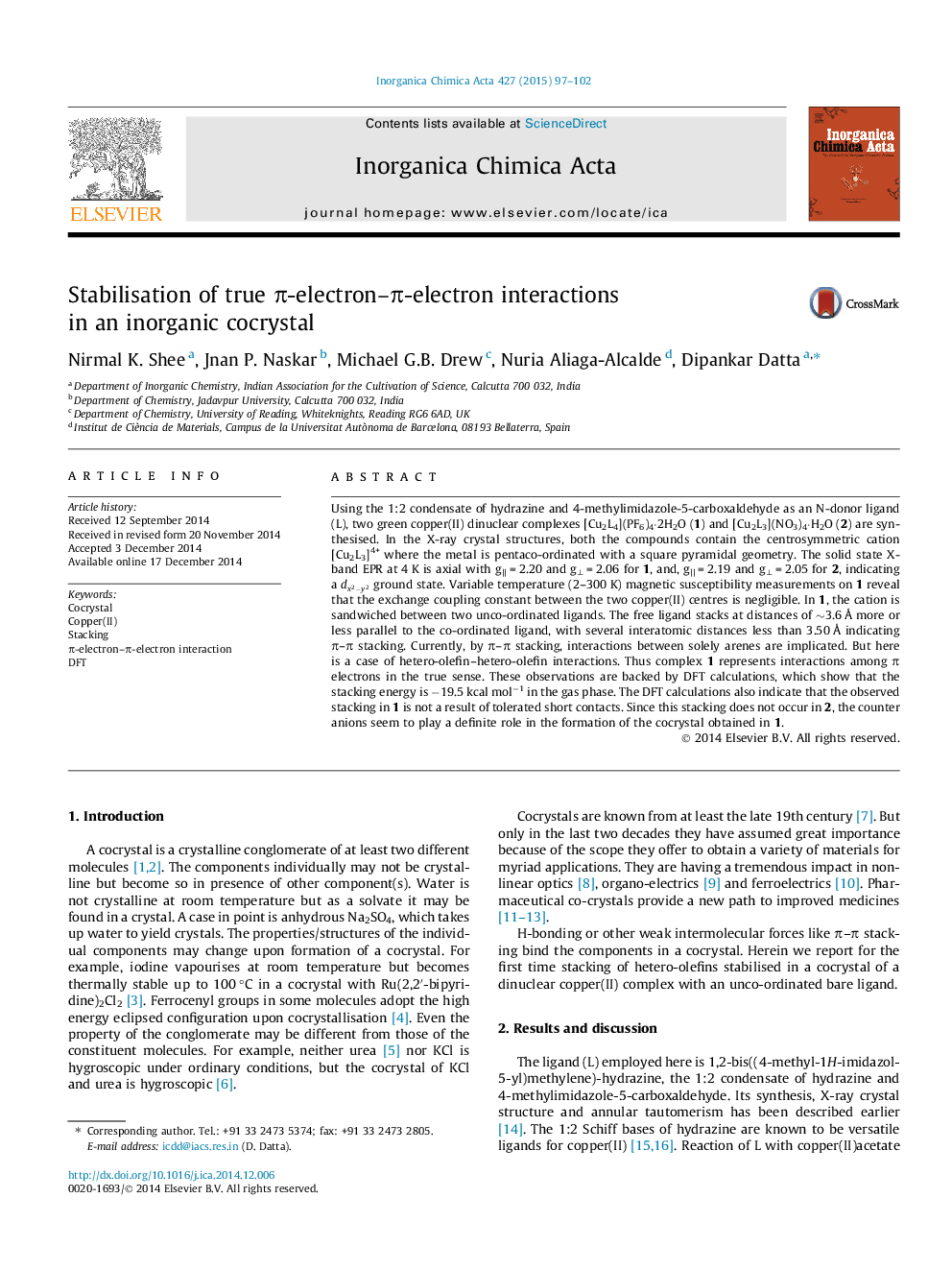| Article ID | Journal | Published Year | Pages | File Type |
|---|---|---|---|---|
| 1312092 | Inorganica Chimica Acta | 2015 | 6 Pages |
•With a N-donor ligand L, two copper(II) complexes having [Cu2L3]4+ cations are synthesised.•In one (1) the anion is PF6− and in the other (2) NO3−.•1 is a cocrystal of one unit of [Cu2L3]4+ and a free L, while 2 is not a cocrystal.•In 1 the components are bound by unprecedented non-arene-non-arene π–π stacking.
Using the 1:2 condensate of hydrazine and 4-methylimidazole-5-carboxaldehyde as an N-donor ligand (L), two green copper(II) dinuclear complexes [Cu2L4](PF6)4·2H2O (1) and [Cu2L3](NO3)4·H2O (2) are synthesised. In the X-ray crystal structures, both the compounds contain the centrosymmetric cation [Cu2L3]4+ where the metal is pentaco-ordinated with a square pyramidal geometry. The solid state X-band EPR at 4 K is axial with g|| = 2.20 and g⊥ = 2.06 for 1, and, g|| = 2.19 and g⊥ = 2.05 for 2, indicating a dx2-y2dx2-y2 ground state. Variable temperature (2–300 K) magnetic susceptibility measurements on 1 reveal that the exchange coupling constant between the two copper(II) centres is negligible. In 1, the cation is sandwiched between two unco-ordinated ligands. The free ligand stacks at distances of ∼3.6 Å more or less parallel to the co-ordinated ligand, with several interatomic distances less than 3.50 Å indicating π–π stacking. Currently, by π–π stacking, interactions between solely arenes are implicated. But here is a case of hetero-olefin–hetero-olefin interactions. Thus complex 1 represents interactions among π electrons in the true sense. These observations are backed by DFT calculations, which show that the stacking energy is −19.5 kcal mol−1 in the gas phase. The DFT calculations also indicate that the observed stacking in 1 is not a result of tolerated short contacts. Since this stacking does not occur in 2, the counter anions seem to play a definite role in the formation of the cocrystal obtained in 1.
Graphical abstractA dicopper(II) complex is described where the complex cation forms a cocrystal with an uncoordinated ligand. The components are bound to each other by unprecedented non-arene-non-arene π–π stacking.Figure optionsDownload full-size imageDownload as PowerPoint slide
